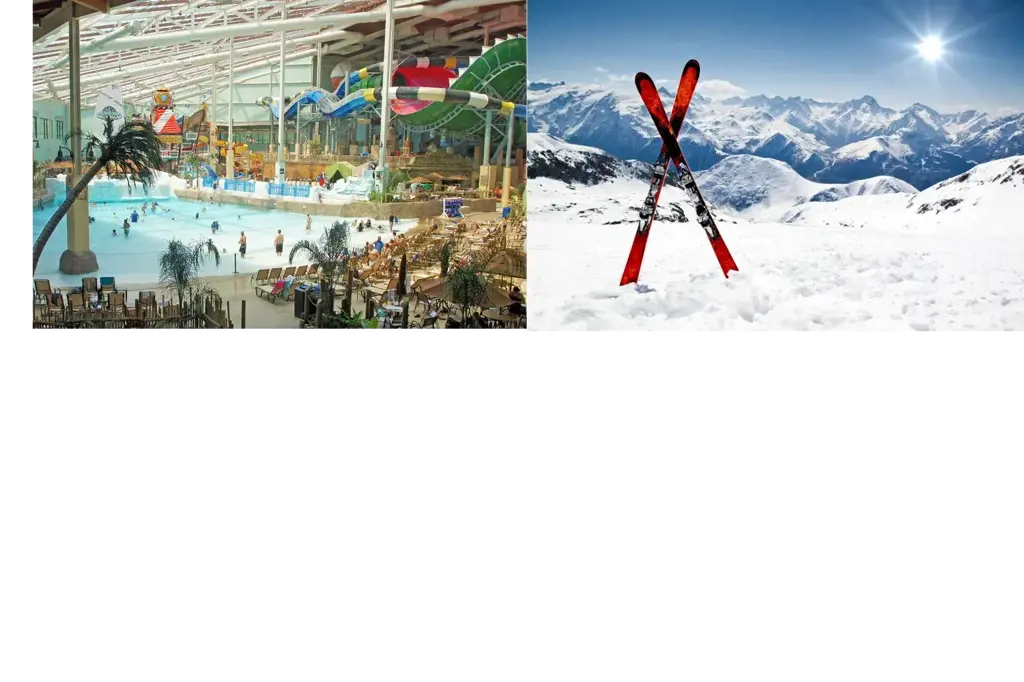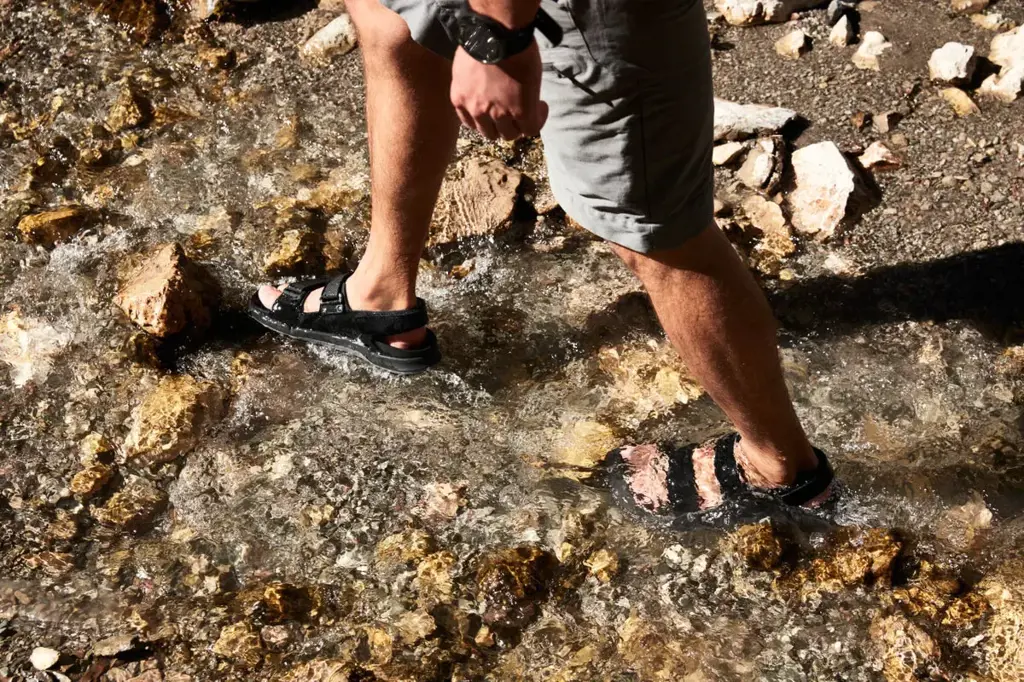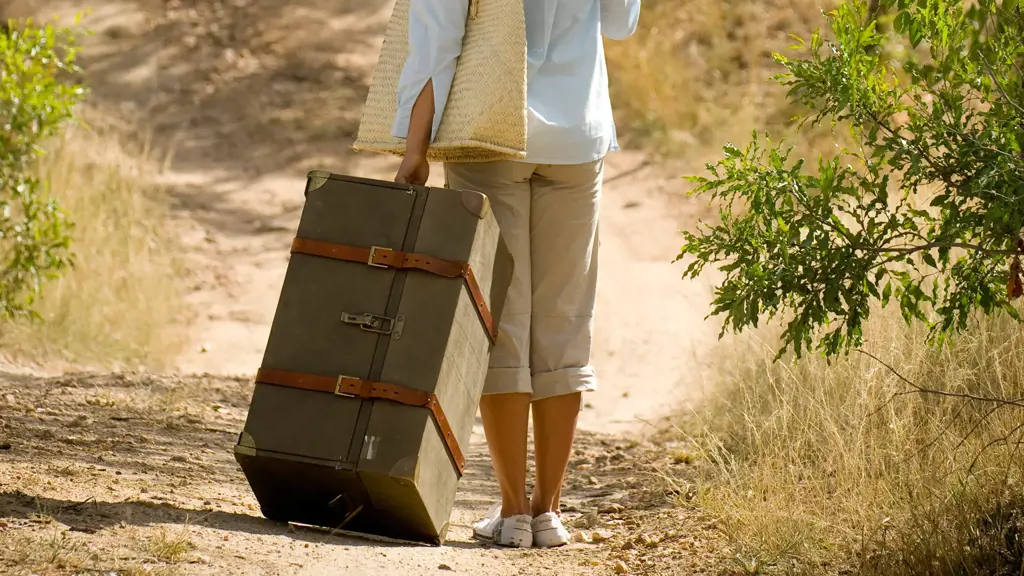
Are you ready to embark on a winter adventure in one of the world's most captivating and unexpected destinations? The Kalahari Desert, located in Southern Africa, offers a unique and breathtaking experience for those brave enough to venture into its vast expanse during the winter months. However, before you embark on this thrilling escapade, it's crucial to pack the essential items that will ensure your safety, comfort, and enjoyment. From warm clothing to navigation tools, this guide will give you a comprehensive overview of the must-have items for a winter journey through the Kalahari Desert. So grab your travel checklist and get ready to embrace the magic of the desert!
What You'll Learn
- What are the essential items to pack for a trip to the Kalahari Desert in winter?
- Are there any specific clothing recommendations for staying warm in the Kalahari's winter temperatures?
- What kind of footwear is recommended for exploring the Kalahari in winter?
- Should I pack any specific items for protection against the desert's harsh conditions?
- Are there any additional supplies or equipment that would be helpful to have in the Kalahari during winter?

What are the essential items to pack for a trip to the Kalahari Desert in winter?

The Kalahari Desert is a vast and captivating region in southern Africa, known for its stunning landscapes and unique wildlife. While it may be tempting to visit this beautiful desert anytime throughout the year, it is important to note that the desert can have extreme temperature variations depending on the season. Packing the right items is crucial to ensure a comfortable and safe trip, especially during the winter months when temperatures can drop significantly. Here are some essential items to pack for a trip to the Kalahari Desert in winter:
Warm Clothing:
Winter nights in the Kalahari Desert can be quite chilly, so it's important to pack warm clothing. Layering is key as it allows you to adjust your attire according to the temperature. Start with a base layer of thermal clothing that will keep you warm and dry. This should be followed by a middle layer of insulating clothing, such as a fleece or wool sweater. Finally, have an outer layer that is windproof and waterproof, such as a sturdy jacket. Don't forget to pack warm hats, gloves, and scarves as well.
Comfortable Footwear:
Exploring the Kalahari Desert involves a lot of walking and hiking, so it's crucial to have comfortable footwear. Opt for sturdy hiking boots that will provide good support and traction. Make sure the boots are broken in before your trip to avoid blisters and discomfort. It's also a good idea to pack an extra pair of comfortable shoes to wear around the campsite or during rest periods.
Sun Protection:
Even in the winter months, the Kalahari Desert can be scorching during the day. Sun protection is essential to prevent sunburn and dehydration. Pack a broad-brimmed hat to shield your face and neck from the intense sun. Sunglasses with UV protection are also a must to protect your eyes from harmful rays. Additionally, bring a high SPF sunscreen and apply it liberally throughout the day to protect your skin from the desert's harsh rays.
Hydration Gear:
Staying hydrated is crucial in the Kalahari Desert, regardless of the season. Pack a sturdy water bottle or hydration pack that can hold a sufficient amount of water. Consider using a bottle made from materials that can insulate your water and keep it cool, as the desert can get incredibly hot during the day. Having water purification tablets or a portable water filter is also a good idea, as it allows you to replenish your water supply from natural sources if needed.
First Aid Kit:
It's always important to have a well-stocked first aid kit on hand during any trip, especially in remote areas like the Kalahari Desert. Include essentials such as bandages, antiseptic ointment, pain relievers, diarrhea medication, insect repellent, and any personal prescription medications you may require. Familiarize yourself with basic first aid practices and ensure you have a comprehensive understanding of how to use all the items in your kit.
Camping Gear:
If you plan to camp in the Kalahari Desert, make sure to pack all the necessary gear. A sturdy tent that can withstand wind and sand is essential. Look for a tent with good ventilation to avoid condensation inside. A warm sleeping bag is crucial to keep you comfortable during the cold nights. Don't forget to pack a camping stove, cooking utensils, food, and plenty of water for your camping adventure.
Binoculars and Camera:
The Kalahari Desert is home to a diverse range of wildlife, including meerkats, lions, elephants, and many species of birds. Packing binoculars and a camera will allow you to observe and capture the unique flora and fauna that inhabit this remarkable desert. It's also a good idea to bring extra batteries and memory cards for your camera to ensure you don't miss any precious moments.
Preparing for a trip to the Kalahari Desert in winter requires careful planning and packing. By ensuring you have the right clothing, gear, and equipment, you can fully enjoy the breathtaking beauty of this remarkable desert while staying comfortable and safe. Remember, the desert can be unpredictable, so it's always better to be over-prepared than underprepared.
Essential Items for Your Cross Country Motorcycle Adventure
You may want to see also

Are there any specific clothing recommendations for staying warm in the Kalahari's winter temperatures?

The Kalahari Desert, situated in Southern Africa, is known for its extreme temperatures, including scorching heat during the day and freezing cold at night. When planning a trip to the Kalahari during the winter months, it is essential to pack the right clothing to stay warm and comfortable.
Here are some specific clothing recommendations for staying warm in the Kalahari's winter temperatures:
- Layering is key: The temperature in the Kalahari can vary drastically between day and night, so it is essential to dress in layers. Start with a base layer made of moisture-wicking material like merino wool or synthetic fabrics. This will help keep sweat away from your body and prevent you from feeling clammy and cold. For the mid-layer, opt for a fleece or down jacket to provide insulation. Finally, top it off with a windproof and waterproof outer layer to protect you from the elements.
- Insulated headwear: The head is where most heat loss occurs, so wearing a warm hat or beanie is crucial. Look for a hat that covers your ears and is made of insulating material like wool or fleece. You may also consider using a neck gaiter or scarf to protect your neck and face from the cold and wind.
- Thermal underwear: Invest in a good pair of thermal underwear to keep your legs and torso warm. Thermal leggings and long-sleeved tops made of insulating materials will help retain body heat and provide additional warmth under your regular clothing.
- Warm socks: Cold feet can make you feel miserable, so it's important to wear warm socks. Look for thermal socks made of wool or synthetic materials that provide insulation and moisture-wicking properties. Consider wearing multiple layers of socks or using foot warmers for added warmth.
- Insulated footwear: Choose sturdy and insulated boots to protect your feet from the cold and rough terrain. Look for boots with thick soles and good traction to prevent slipping on icy surfaces. Insulated boots with a waterproof and breathable membrane will also help keep your feet dry and warm.
- Gloves or mittens: Don't forget to pack a pair of warm gloves or mittens to protect your hands from the freezing temperatures. Look for gloves or mittens with insulation and a waterproof exterior to keep your hands dry and warm.
Remember to pack extra layers and clothing in case of unexpected temperature drops or changes in weather conditions. Additionally, always check the weather forecast before your trip and adjust your clothing accordingly.
By following these clothing recommendations, you can stay warm and comfortable during the Kalahari's winter temperatures. Enjoy your adventure in this unique and beautiful desert!
Essential Items to Pack for an Unforgettable Sapa Trekking Experience
You may want to see also

What kind of footwear is recommended for exploring the Kalahari in winter?

When exploring the harsh terrain of the Kalahari in winter, it is crucial to choose the right footwear to protect your feet and ensure a comfortable and safe experience. The Kalahari, located in southern Africa, experiences extreme temperatures, rough terrain, and the potential for encounters with venomous creatures. Here is a guide to help you select the most suitable footwear for your Kalahari adventure:
- Opt for Lightweight Hiking Boots: Hiking boots provide excellent ankle support and protection from thorns, rocks, and uneven surfaces. Look for boots that are lightweight and made of durable materials, such as leather or synthetic fabrics. The boots should have a sturdy sole with deep treads for traction on sandy or slippery surfaces.
- Choose Closed-Toe Shoes: To safeguard your feet from snake and scorpion bites, it is essential to wear closed-toe shoes. Avoid open-toe sandals or shoes that expose your feet to the environment. Choose shoes that have a fully enclosed design to prevent any unwanted encounters with venomous creatures.
- Consider Waterproof or Water-Resistant Footwear: The Kalahari experiences occasional rainfall during the winter months. To protect your feet from getting wet and potentially causing discomfort or blisters, consider wearing waterproof or water-resistant hiking boots. These boots will keep your feet dry even when walking through wet areas or encountering small streams.
- Keep Your Feet Warm: Even though the Kalahari is a desert, temperatures can drop significantly during the winter nights. Ensure your footwear provides adequate insulation to keep your feet warm. Consider wearing thick socks or using insulated insoles to provide additional warmth.
- Break-in Your Footwear: Before embarking on your Kalahari adventure, make sure you break-in your footwear to prevent blisters and ensure a comfortable fit. Wear them for short walks or hikes in the weeks leading up to your trip. This process will allow your boots to mold to the shape of your feet and reduce the risk of discomfort.
- Bring Extra Pair of Footwear: It is always a good idea to bring an extra pair of footwear, especially on longer expeditions. Having a spare pair will come in handy in case your primary shoes get damaged or wet. Make sure to pack them in a waterproof bag to keep them dry and protected.
- Consider Gaiters: Gaiters are protective coverings that go over your boots and lower legs. They provide an additional layer of protection against sand, rocks, thorns, and snake bites. Gaiters are especially useful in the Kalahari, where the terrain can be challenging and unforgiving.
In conclusion, when exploring the Kalahari in winter, it is crucial to choose appropriate footwear that provides protection, support, and comfort. Lightweight hiking boots with ankle support, closed-toe design, waterproof or water-resistant features, and adequate insulation are highly recommended. Taking the time to break-in your footwear and bringing an extra pair, as well as considering gaiters for added protection, will ensure a safe and enjoyable Kalahari experience.
The Ultimate Packing List for Your Hawaii Vacation
You may want to see also

Should I pack any specific items for protection against the desert's harsh conditions?

When venturing into the desert, it is crucial to pack specific items for protection against the harsh conditions. The desert environment can be extremely challenging and unforgiving, so it is essential to come prepared with the right gear to ensure your safety and well-being. Here are some must-have items that you should consider packing for your desert adventure:
Sun Protection:
The desert is synonymous with scorching sun, making it vital to protect yourself from harmful UV rays. Pack sunscreen with a high SPF rating to shield your skin from the intense sun. Additionally, don't forget to bring sunglasses to protect your eyes from the glare and a wide-brimmed hat to provide shade for your face and neck.
Water:
Staying hydrated is crucial in the desert to prevent heatstroke and dehydration. Pack plenty of water – more than you think you'll need. It's better to have extra water on hand rather than run out. Opt for a sturdy water bottle or a hydration pack that you can easily carry with you.
Clothing:
Choose lightweight, breathable, and loose-fitting clothing to protect yourself from the sun and keep cool. Long-sleeved shirts and pants can protect your skin from the sun's harmful rays. Opt for light-colored clothing that reflects rather than absorbs heat. Additionally, a wide-brimmed hat and a bandana to cover your neck and face can be beneficial.
Navigation Tools:
Since deserts can be vast and challenging to navigate, it is crucial to pack navigation tools like a compass, map, and GPS device. It is essential to have a reliable method to find your way and prevent getting lost in the desert's vastness.
First Aid Kit:
Always carry a well-stocked first aid kit, including essentials such as bandages, antiseptic, painkillers, and any personal medications you may need. The desert environment can be unpredictable, and having a first aid kit can prove to be a lifesaver in case of any injuries or emergencies.
Emergency Shelter:
It is essential to pack a lightweight emergency shelter, such as a tent or a survival blanket. Deserts can quickly turn from scorching hot to brutally cold during the night, and having adequate shelter can protect you from extreme temperatures and potential windstorms.
Multi-tool:
A versatile multi-tool is always handy in any outdoor adventure. It can be useful for a variety of tasks, including repairing gear, cutting ropes, opening cans, or even building a makeshift shelter if needed.
Communication Devices:
In case of an emergency, it is crucial to have a reliable means of communication. Bring a fully charged cell phone, a two-way radio, or even a satellite phone if you're venturing into remote desert regions.
Food and Snacks:
Pack lightweight and nutritious food options that require minimal preparation. Opt for energy bars, nuts, dried fruits, or freeze-dried meals that provide essential nutrients and can sustain you during your desert venture.
Personal Safety Equipment:
Depending on the activities you plan to engage in, it might be wise to pack additional safety gear such as a helmet, goggles, gloves, or knee and elbow pads. Ensure you are adequately equipped to protect yourself during adventures like dune bashing or off-roading.
Remember, these items are just suggestions to help ensure your safety and comfort in the desert. It is crucial to research and plan for the specific conditions and activities you will encounter during your desert adventure. Always consult with experienced desert travelers or outdoor experts to gain more knowledge and insights about the area you will be exploring.
Essential Items to Pack for a Day at SeaWorld
You may want to see also

Are there any additional supplies or equipment that would be helpful to have in the Kalahari during winter?

The Kalahari Desert is a vast and arid region located in southern Africa. Known for its extreme temperatures and harsh conditions, the winter months can be particularly challenging for travelers and residents alike. In order to navigate this harsh environment safely and comfortably, it is essential to have the right supplies and equipment on hand. While some basic items are necessary year-round, there are a few additional supplies that can greatly enhance your experience during the winter season.
First and foremost, it is essential to have proper clothing and gear to stay warm and protected from the cold. The Kalahari can experience freezing temperatures at night, so it is important to have thermal underwear, warm socks, and a heavy-duty winter jacket. Additionally, a hat, gloves, and a scarf can help protect your extremities from the cold. It is also advisable to bring extra layers, such as sweaters or fleece jackets, for added insulation. Having a good-quality tent that is designed for cold weather camping is also crucial, as it will provide a warm and dry shelter during the nights.
Another important supply to have in the Kalahari during winter is a reliable source of heat. This can include a portable camping stove or a small gas heater. These can be used to warm up your tent or cook meals, providing much-needed warmth and comfort during the cold winter nights. It is important to ensure that you have enough fuel or gas to last throughout your stay, as it may be difficult to find these resources in the remote areas of the desert.
In addition to clothing and heat sources, having the right equipment for navigation and communication is essential for safety in the Kalahari during winter. A good-quality map, compass, or GPS device can help you navigate through the vast and often featureless landscape. It is also advisable to have a satellite phone or a reliable communication device in case of emergencies. The Kalahari can be a remote and isolated place, so it is important to be able to reach out for help if needed.
Lastly, it is important to be prepared for potential hazards and emergencies that can arise in the desert. This includes having a well-stocked first aid kit that includes supplies for treating dehydration, heatstroke, or other common desert ailments. It is also advisable to have a water filtration system or enough water purification tablets to ensure a clean and safe water supply. Additionally, having a backup power source, such as a portable solar charger for your electronic devices, can be helpful in case of emergency or extended periods without electricity.
In conclusion, while the Kalahari Desert in winter can be a challenging environment, with the right supplies and equipment, you can have a safe and enjoyable experience. It is crucial to have warm clothing, a reliable source of heat, proper navigation and communication tools, and be prepared for emergencies. By being well-prepared and taking necessary precautions, you can make the most of your winter adventure in the Kalahari.
Essential Packing List for a Trip to Holden Village
You may want to see also
Frequently asked questions
When traveling to Kalahari during winter, it is important to pack clothing that will keep you warm during the cool temperatures. Bring layers such as sweaters, long-sleeve shirts, and jackets to help regulate your body temperature. Don't forget to pack a hat, gloves, and a scarf for extra warmth. Additionally, it is advisable to pack sturdy walking shoes or boots to handle the rugged terrain.
Yes, even though it is winter in Kalahari, it is still essential to pack sunscreen. The sun can still be strong and harmful to your skin, so it is important to take precautions and apply sunscreen regularly, especially if you plan to spend a lot of time outdoors.
Yes, while the winter months in Kalahari are generally less mosquito-prone compared to other times of the year, it is still recommended to bring some form of insect repellent. Insects like mosquitoes can still be present, especially near water sources like rivers and pools. Choose a repellent with an effective ingredient such as DEET or picaridin to protect yourself from potential mosquito bites.
Bringing binoculars can be a great addition to your packing list for a winter trip to Kalahari. The dry season during winter often attracts a variety of wildlife to the remaining water sources, making it an ideal time for birdwatching and animal spotting. Binoculars will enhance your wildlife viewing experience as you can observe animals from a distance without disturbing their natural behavior.







